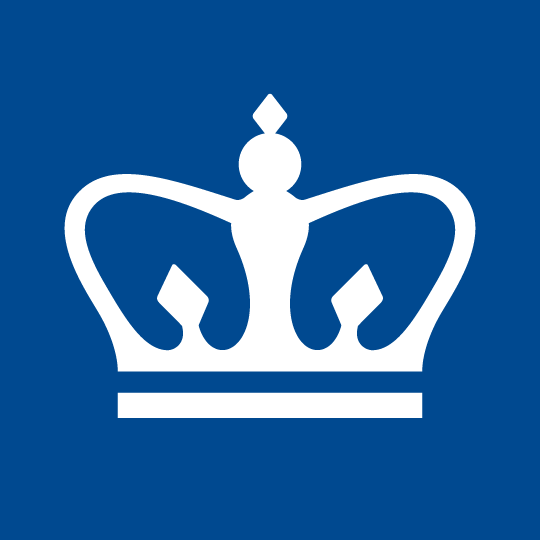Collection context
Summary
- Creator:
- Columbia University. Archives
- Extent:
- 121.31 linear feet and 37 record cartons; 26 custom boxes; 4 small index card boxes; 3.5 document boxes; 3 hat boxes; 4 OS flat boxes; 3 textile boxes; 3 tube boxes; 1 clam shell box; 1 small document box; 1 large index card box;
- Language:
- English , Latin .
- Preferred citation:
Identification of specific item; Date (if known); University Artifacts Collection; Box and Folder; University Archives, Rare Book and Manuscript Library, Columbia University Libraries.
Background
- Scope and Content:
The University Artifacts Collection contains objects, textiles, buttons, trophies, ribbons, plaques, plates, and other three-dimensional items used as well as created by or for the University since its founding in 1754 as King's College. Some items were created for specific individuals or classes.
- Biographical / Historical:
Columbia University, the oldest institution of higher learning in the state of New York and the fifth oldest in the United States, was founded in 1754 as King's College by royal charter of King George II of England. Samuel Johnson, the College's first president, held the first classes in October 1754 in the vestry room of the Trinity Church schoolhouse on lower Broadway. There were eight students in this first class. This room housed classes until 1760 when the school moved to a building on Park Place in downtown Manhattan, near the present site of City Hall. Classes were suspended during the American Revolution in 1776 and the building was used as a barrack and hospital for both British and American troops. When instruction resumed in 1784, King's College changed its name to Columbia, in keeping with the contemporary political climate.
Classes continued in the Park Place campus building until 1857, when, to accommodate its continuing expansion, the college moved to 49th Street and Madison Avenue. It remained at this site for forty years, until 1897, when the university was moved by President Seth Low to the more spacious Morningside Heights campus, designed as an urban academic village by McKim, Mead, and White.
During the last half of the nineteenth century, Columbia rapidly assumed the shape of a modern university. The Columbia School of Law was founded in 1858. The country's first mining school, a precursor of today's Fu Foundation School of Engineering and Applied Science, was established in 1864 and awarded the first Columbia Ph.D. in 1875. Barnard College for women became affiliated with Columbia in 1889; the medical school came under the aegis of the University in 1891, followed by Teachers College in 1893. In the 1880s, Columbia developed graduate faculties in political science, philosophy, and pure science, establishing Columbia as one of the nation's earliest center for graduate education. In 1896, the Trustees authorized the use of yet another new name, Columbia University, and today the institution is officially known as Columbia University in the City of New York.
During the presidency of Nicholas Murray Butler (1902-1945), Columbia emerged as a preeminent national center for educational innovation and scholarly achievement. The study of the sciences flourished along with the liberal arts. Franz Boas founded the modern science of anthropology at Columbia in the early decades of the twentieth century; the School of Journalism was established by bequest of Joseph Pulitzer in 1912; a course of study of original masterworks for undergraduates was created which ultimately developed into what is now know as the Core Curriculum; and atomic research was conducted by Columbia faculty, bringing the Physics Department to international prominence. In 1946, the School of International Affairs (now the School of International and Public Affairs) was founded marking the beginning of intensive growth in international relations as a major scholarly focus of the University.
Columbia continued to expand in the ensuing decades -- improving both its physical plant and creating new programs and infrastructure for a growing campus and community. Today it is considered one of the pre-eminent institutions of higher learning in the country and in the world.
- Processing information:
Collection-level record describing unprocessed material made public in summer 2018 as part of the Hidden Collections initiative.
EAD finding aid created by Jocelyn Wilk in December 2022.
- Arrangement:
This collection is arranged into 10 series. Artifacts are arranged by type of material they are primarily made from and sometimes are sub-divided further into more refined categories. Artifacts that could not be easily categorized are found in series IX: "Memorabilia".
- Accruals:
Additions are expected
- Rules or conventions:
- Describing Archives: A Content Standard
Indexed Terms
- Subjects:
- Artifacts (object genre)
Realia - Names:
- Columbia University
Access
- RESTRICTIONS:
-
The following boxes are located off-site in 408C Low Library: 1-32, 35-43, 45-49, 51-70.
Due to the fragile and unwieldly nature of many items in this collection, access should be arranged with the University Archives staff. Please email uarchives@columbia.edu for assistance.
- TERMS OF ACCESS:
-
Personal photographs of objects may be made for research purposes. The RBML maintains ownership of the physical material only. Copyright remains with the creator and his/her heirs. The responsibility to secure copyright permission rests with the patron.
- PREFERRED CITATION:
-
Identification of specific item; Date (if known); University Artifacts Collection; Box and Folder; University Archives, Rare Book and Manuscript Library, Columbia University Libraries.
- LOCATION OF THIS COLLECTION:
-
6th Floor East Butler Library535 West 114th St.New York, NY 10027, United States
- CONTACT:
-
(212) 854-5590rbml@library.columbia.edu

